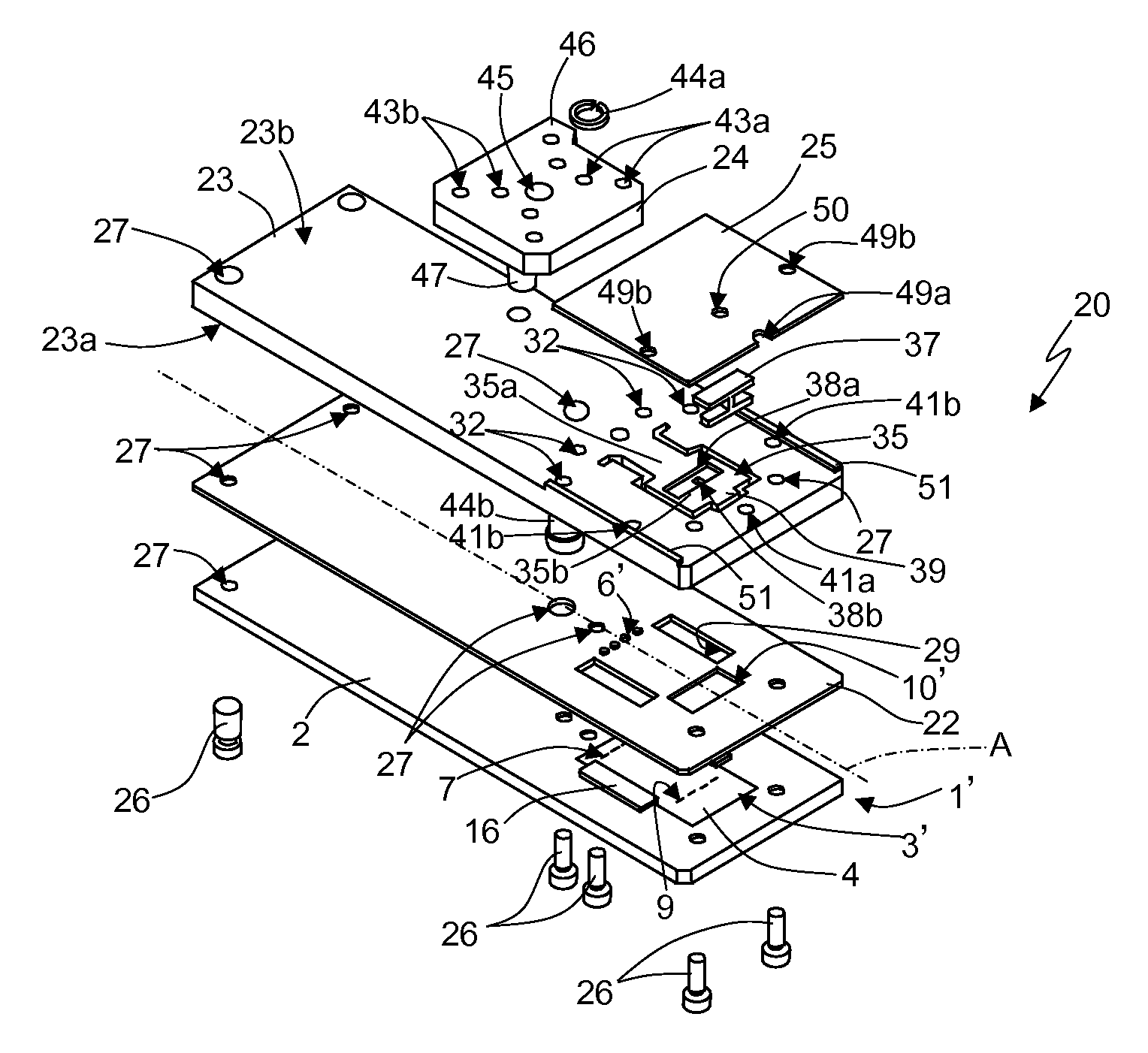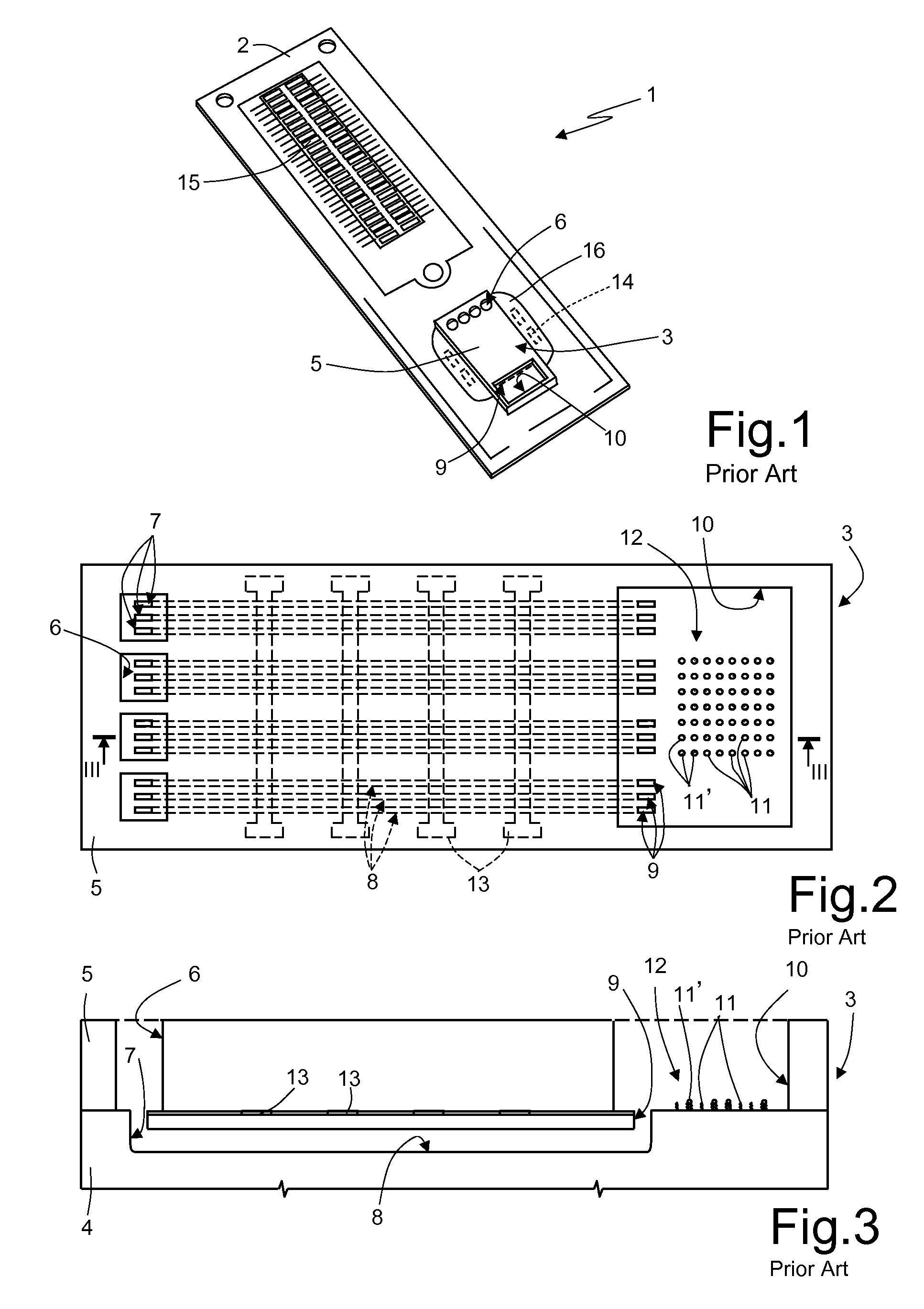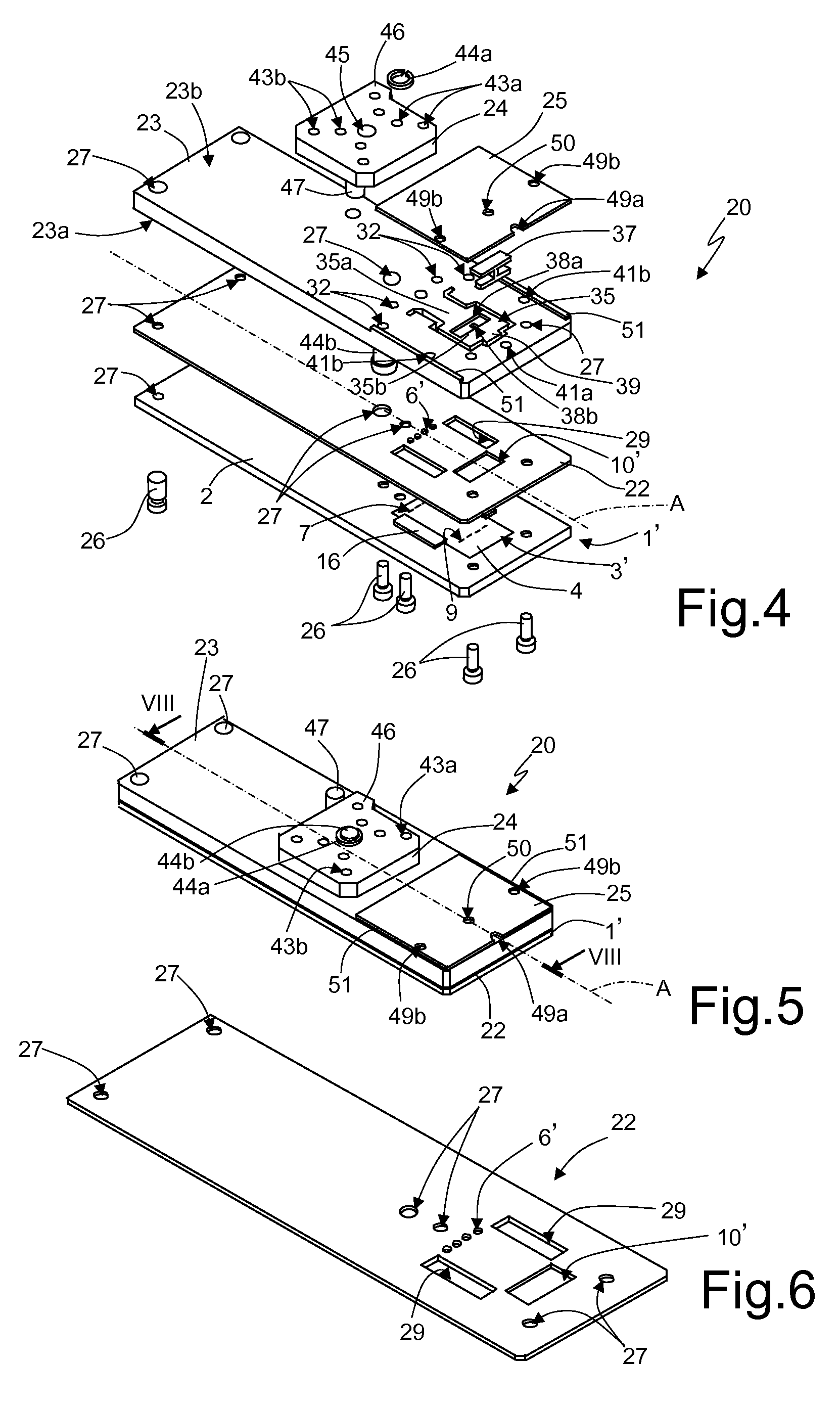Assembly of a microfluidic device for analysis of biological material
- Summary
- Abstract
- Description
- Claims
- Application Information
AI Technical Summary
Problems solved by technology
Method used
Image
Examples
Embodiment Construction
[0037]The previously described integrated microfluidic devices, although allowing rapid and economic analysis of biological material samples, are not completely optimized, exhibiting certain problems in the structure and in the manufacturing process.
[0038]First of all, the use of the structural layer 5 made of glass is particularly expensive and also requires additional process steps for its coupling (for example, via bonding techniques) to the substrate 4.
[0039]The structural layer 5 is usually open to the outside at the substrate inlets and outlets and the detection chamber (except where the above-mentioned clips are used). Accordingly, the risk of contamination exists for the biological material contained inside the microfluidic device. The elastic clips must be applied manually by the user during predefined steps of the biological material analysis cycle; any positioning error can therefore cause contamination and compromise the results of the analysis. Due to the high temperatu...
PUM
 Login to View More
Login to View More Abstract
Description
Claims
Application Information
 Login to View More
Login to View More - R&D
- Intellectual Property
- Life Sciences
- Materials
- Tech Scout
- Unparalleled Data Quality
- Higher Quality Content
- 60% Fewer Hallucinations
Browse by: Latest US Patents, China's latest patents, Technical Efficacy Thesaurus, Application Domain, Technology Topic, Popular Technical Reports.
© 2025 PatSnap. All rights reserved.Legal|Privacy policy|Modern Slavery Act Transparency Statement|Sitemap|About US| Contact US: help@patsnap.com



